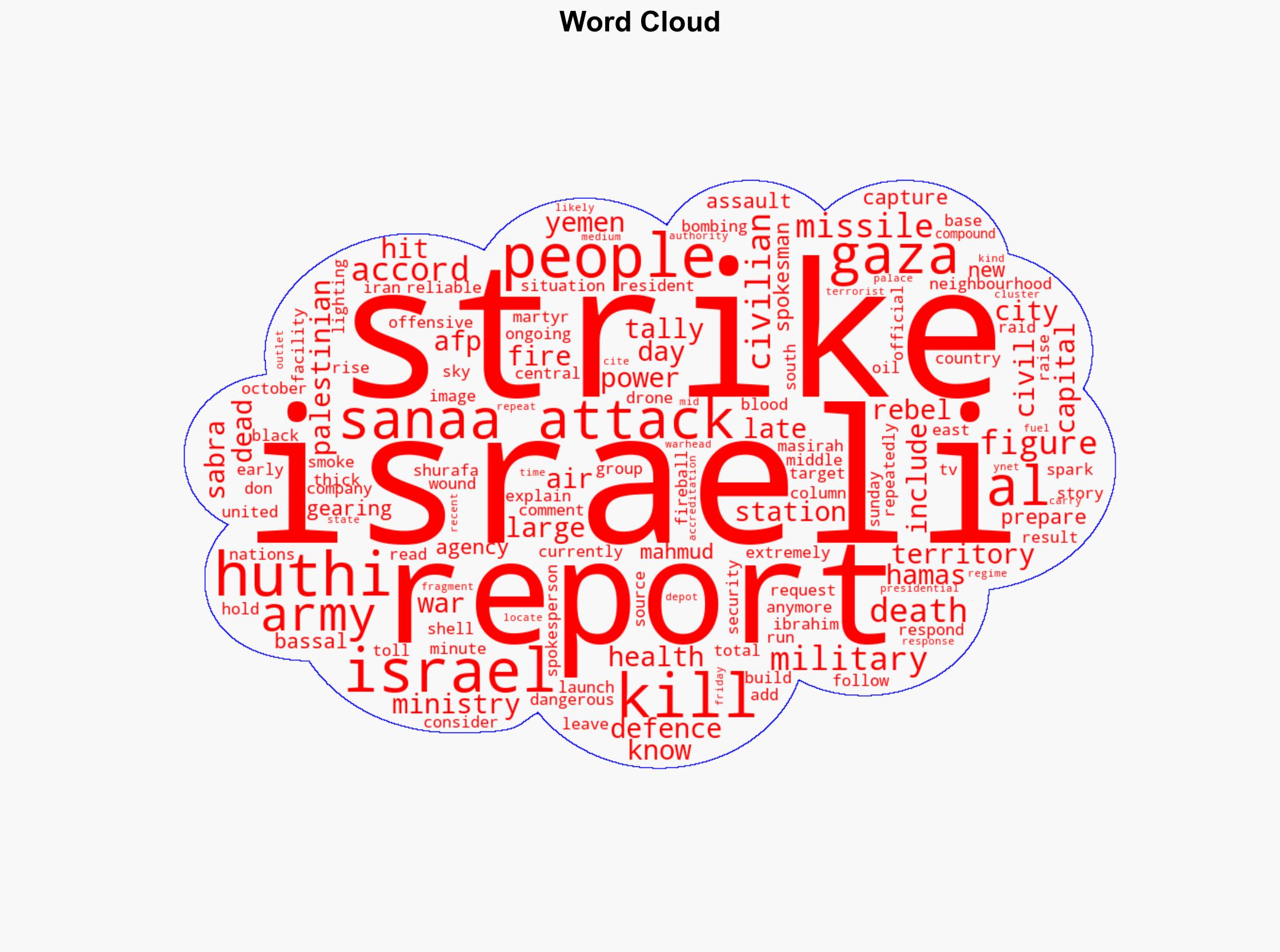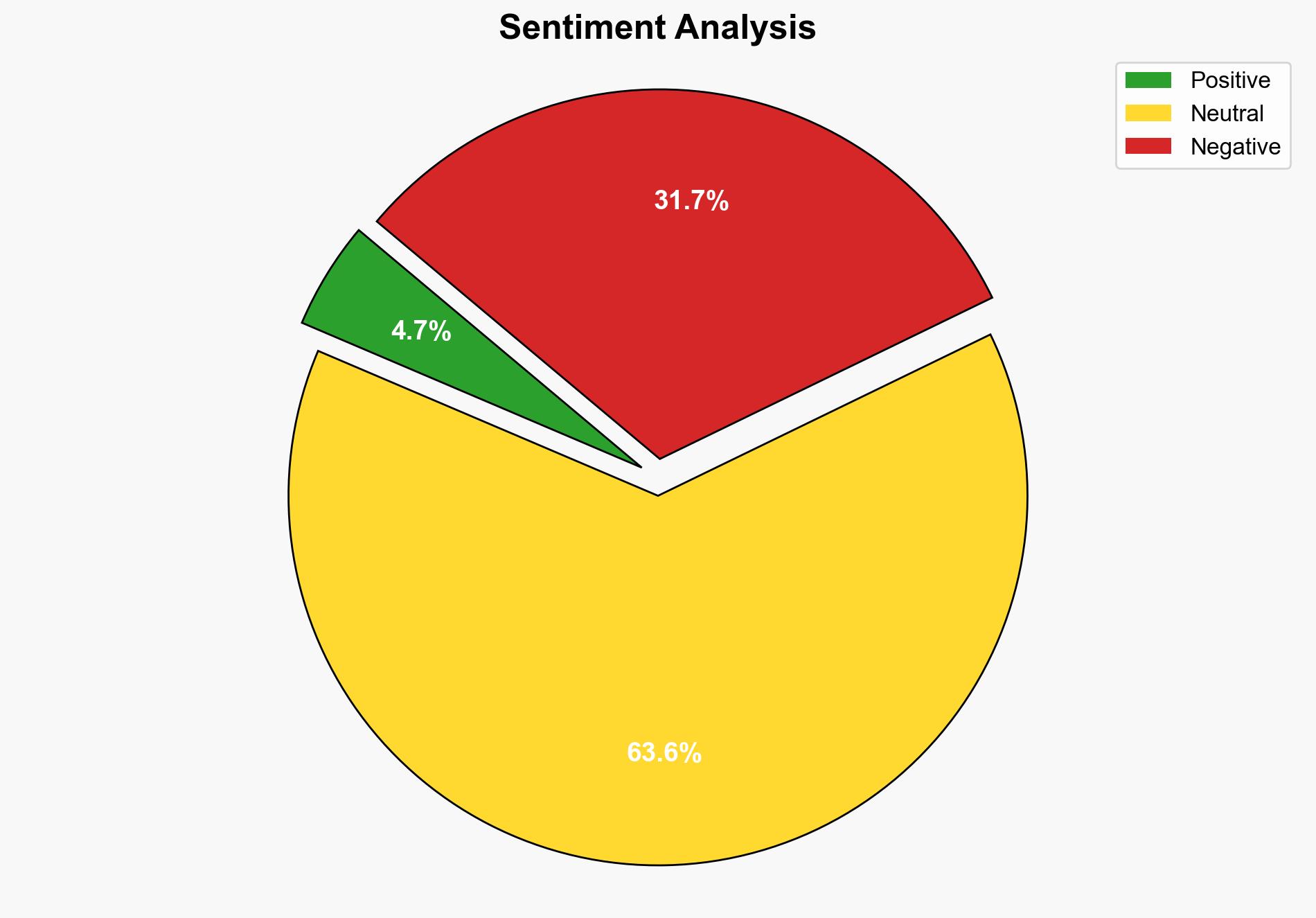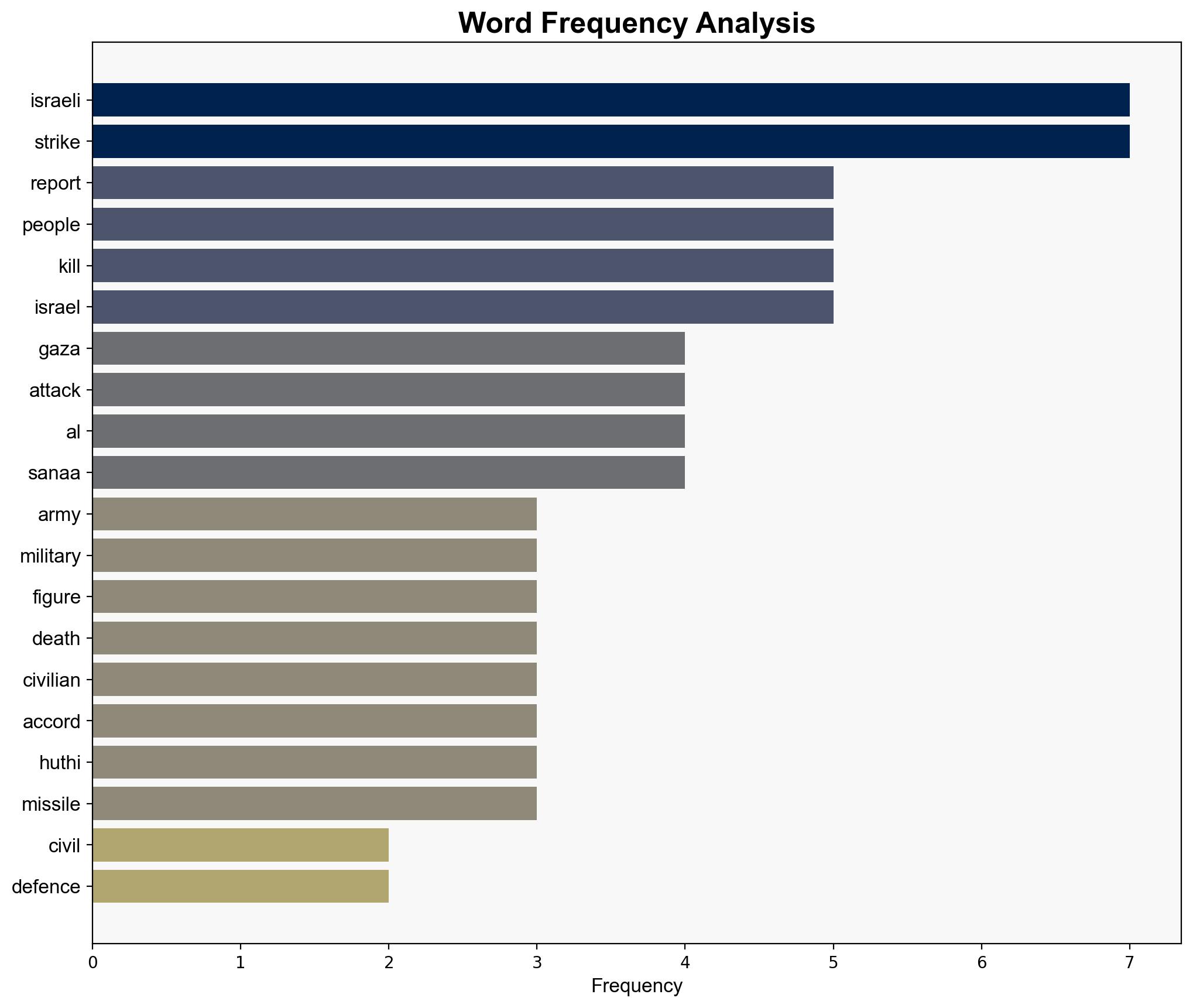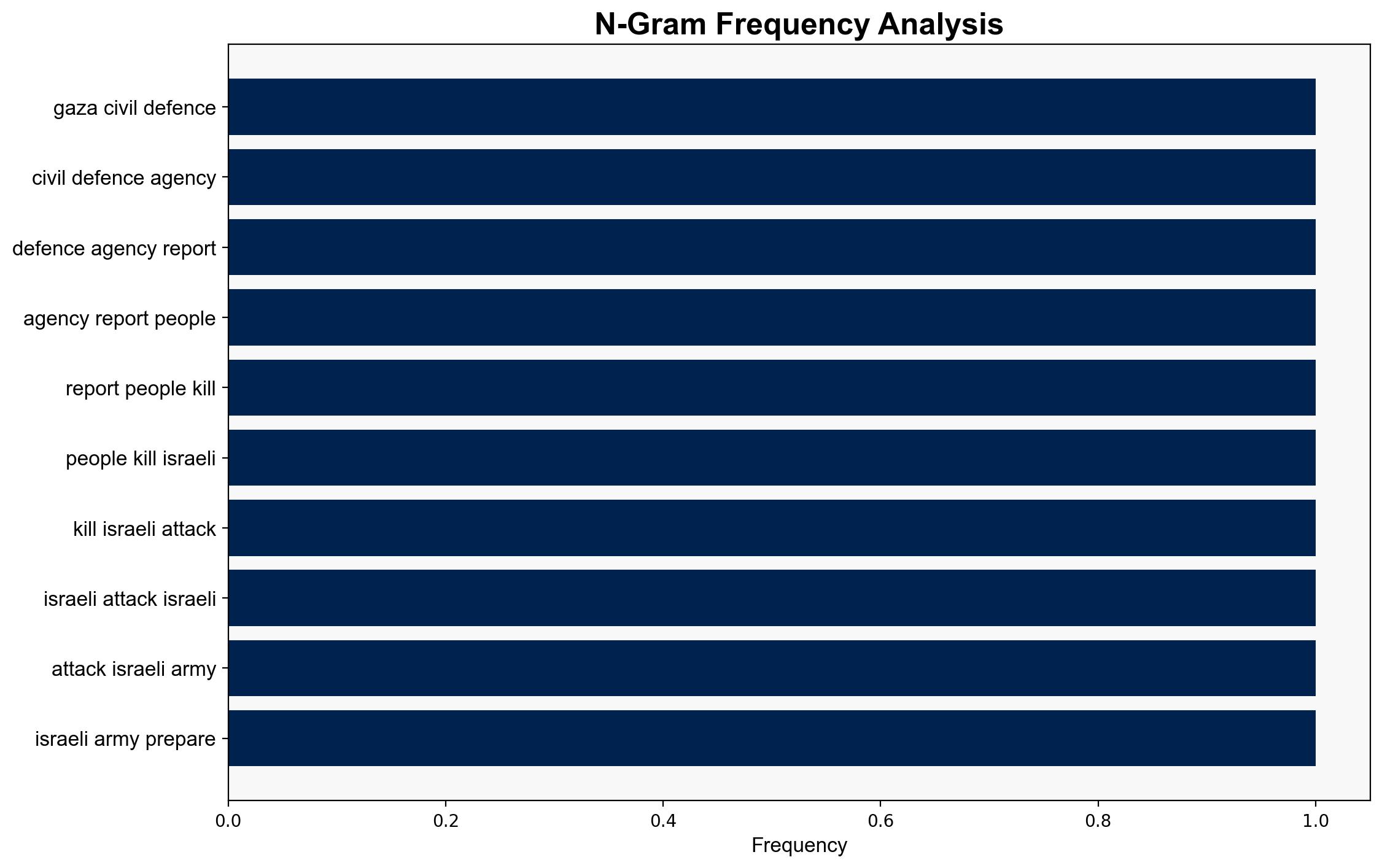Israel pounds Gaza City vows to press on with offensive – RTE
Published on: 2025-08-24
Intelligence Report: Israel pounds Gaza City vows to press on with offensive – RTE
1. BLUF (Bottom Line Up Front)
The ongoing conflict between Israel and Gaza is escalating, with significant civilian casualties reported. The most supported hypothesis is that Israel’s military actions are a strategic response to recent attacks by Hamas and other regional threats, with a high confidence level. It is recommended to closely monitor regional alliances and potential retaliatory actions from other Middle Eastern actors.
2. Competing Hypotheses
1. **Hypothesis A**: Israel’s offensive in Gaza is primarily a defensive measure aimed at neutralizing immediate threats from Hamas and preventing further attacks on Israeli territory.
2. **Hypothesis B**: The offensive is part of a broader strategic initiative to weaken Hamas’s influence in Gaza and reassert control over contested areas, possibly influenced by geopolitical pressures and alliances.
Using the Analysis of Competing Hypotheses (ACH) 2.0, Hypothesis A is better supported by the immediate context of recent attacks and Israel’s historical pattern of military responses to perceived threats. Hypothesis B, while plausible, lacks direct evidence in the current intelligence snippet.
3. Key Assumptions and Red Flags
– **Assumptions**: Both hypotheses assume that Israel’s actions are primarily motivated by security concerns. Hypothesis B assumes external geopolitical influences are significant.
– **Red Flags**: The lack of direct comment from the Israeli army on casualty figures raises questions about transparency. Additionally, the potential underreporting or misreporting of civilian casualties could skew perceptions.
4. Implications and Strategic Risks
The conflict poses risks of regional escalation, particularly with Iran-backed groups like the Huthis engaging in missile attacks. Economic impacts could arise from disruptions in oil supply chains if regional tensions affect key infrastructure. Cyber threats may increase as actors leverage digital platforms for propaganda or disruption.
5. Recommendations and Outlook
- Enhance intelligence sharing with regional allies to anticipate and mitigate retaliatory actions.
- Prepare for potential cyber-attacks targeting critical infrastructure as a form of asymmetric warfare.
- Scenario Projections:
- **Best Case**: De-escalation through diplomatic channels, leading to a ceasefire.
- **Worst Case**: Full-scale regional conflict involving multiple state and non-state actors.
- **Most Likely**: Continued skirmishes with periodic escalations, maintaining a high level of tension.
6. Key Individuals and Entities
– Mahmud Bassal (Civil Defence Spokesman)
– Ibrahim al Shurafa (Al Sabra Resident)
7. Thematic Tags
national security threats, cybersecurity, counter-terrorism, regional focus





